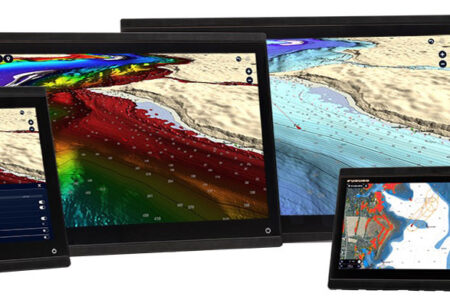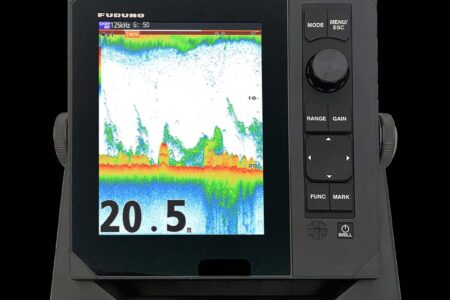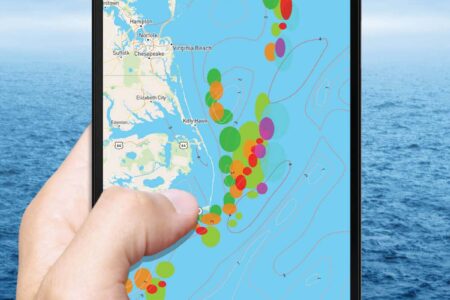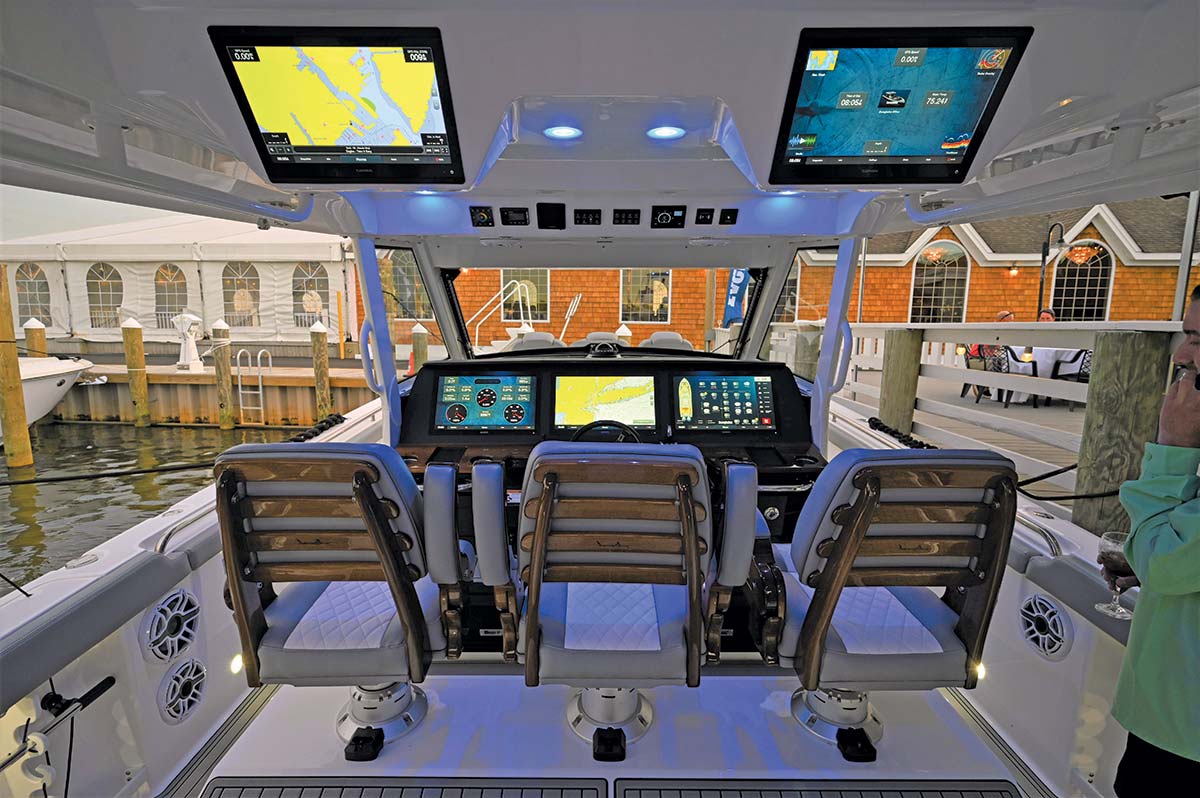
Breaking down the electronics puzzle, from “old school” to “totally integrated”
In the February edition of The Fisherman, we took a closer look at some of the latest next-generation marine electronics from the major manufacturers. For this month, we are going to take a deeper dive into the optimum type of system to install on your boat, whether it’s brand new or formerly owned.
The choices outlined here include adopting a “totally integrated” networked system that uses multiple multi-function displays (MFDs) with the latest NMEA 2000 protocol so that they all share information across platforms; going with an “old school” set-up that employs an independent chartplotter, echo sounder and radar (if you opt for a radar unit); or a hybrid approach that integrates multiple functions like chartplotting, echo sounding and radar into a single, non-networked multi-function display.
Before you skip to the end of the article to see which one I prefer, let me give you the spoiler up front – there is no real “best way” to approach marine electronics. You have to establish your budget, determine your operational needs and space requirements and go from there.
The purpose of this article is to explain the differences to you, provide some knowledge and guide you to what might work best for you when it’s time to make a purchase.
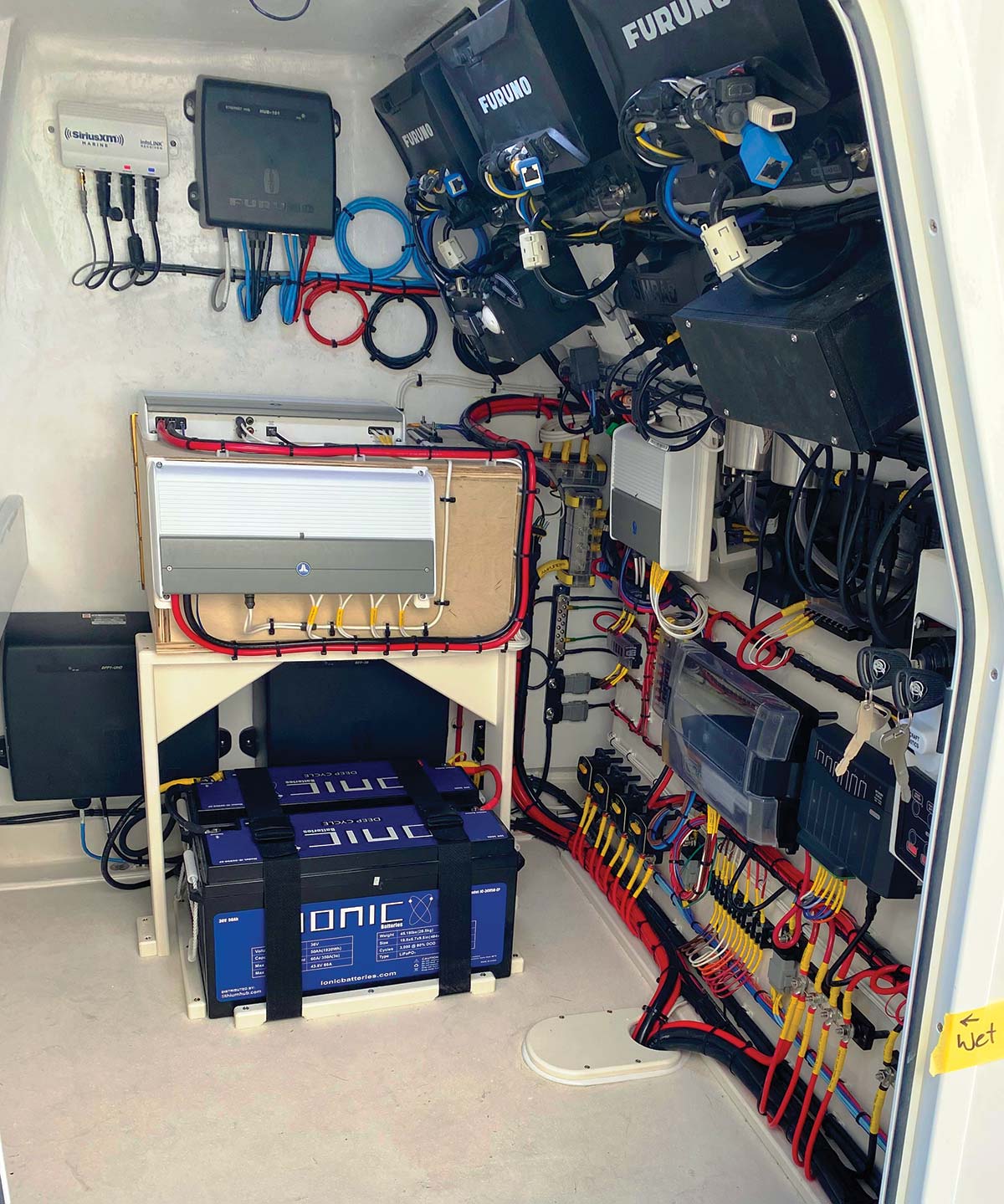
Sticker Shock
A good friend of mine went to the recent New York Boat Show and purchased a new 2023 “name-brand” 23-foot center console outfitted with a single 300-horsepower outboard, hard top, a few options, bottom paint and factory canvas. His price out the door with sales tax was north of $210K and that’s without any electronics! The basic marine electronics package proposed by the local dealer was roughly 10% of the purchase price of $197K. This included a single 12-inch color MFD, black box sounder, through-hull transducer, marine stereo with quad speakers, 2.2-kW radar, VHF radio with antenna and a basic NMEA 2000 trunk line to connect some of this e-gear together on the network. Quick tabulation, that’s over $20,000 for a basic setup with installation and sales tax!
When I was cruising the 2022 Ft Lauderdale Boat Show last fall, some of the dual and triple display networked systems on the new 30 and 40-footers were going for $40 to $50k or more. Yikes, that’s making my 2006 EdgeWater 228 center console look really good to me right now with my repowered Mercury 250 V8 outboard and latest marine electronics upgrade going on their third season together.
Back in the day (for me as a boat owner, that’s the 80s and 90s), the old school approach was to get the best standalone gear you could afford that would fit on your boat. Each unit, specifically the Loran-C and later GPS navigators, echo sounder, radar and VHF were separate machines, all competing for space at helm stations that were not specifically designed for them. Add a little saltwater spray on these sensitive machines, let them sit for a while and the result was a holy mess. It was no wonder this gear had a short shelf life in the field and needed to be replaced more frequently than today’s equipment.
Although marine electronics were cheaper back then and significantly less svelte than their modern day LED counterparts with bulky CRT (cathode ray tube) screens that were either monochrome (one color like green or amber) or color (if you could afford it), they were significantly more expensive for what you were getting compared to today’s products; plus it was hard to fit all of this stuff on a smaller boat with limited panel or dashboard space.
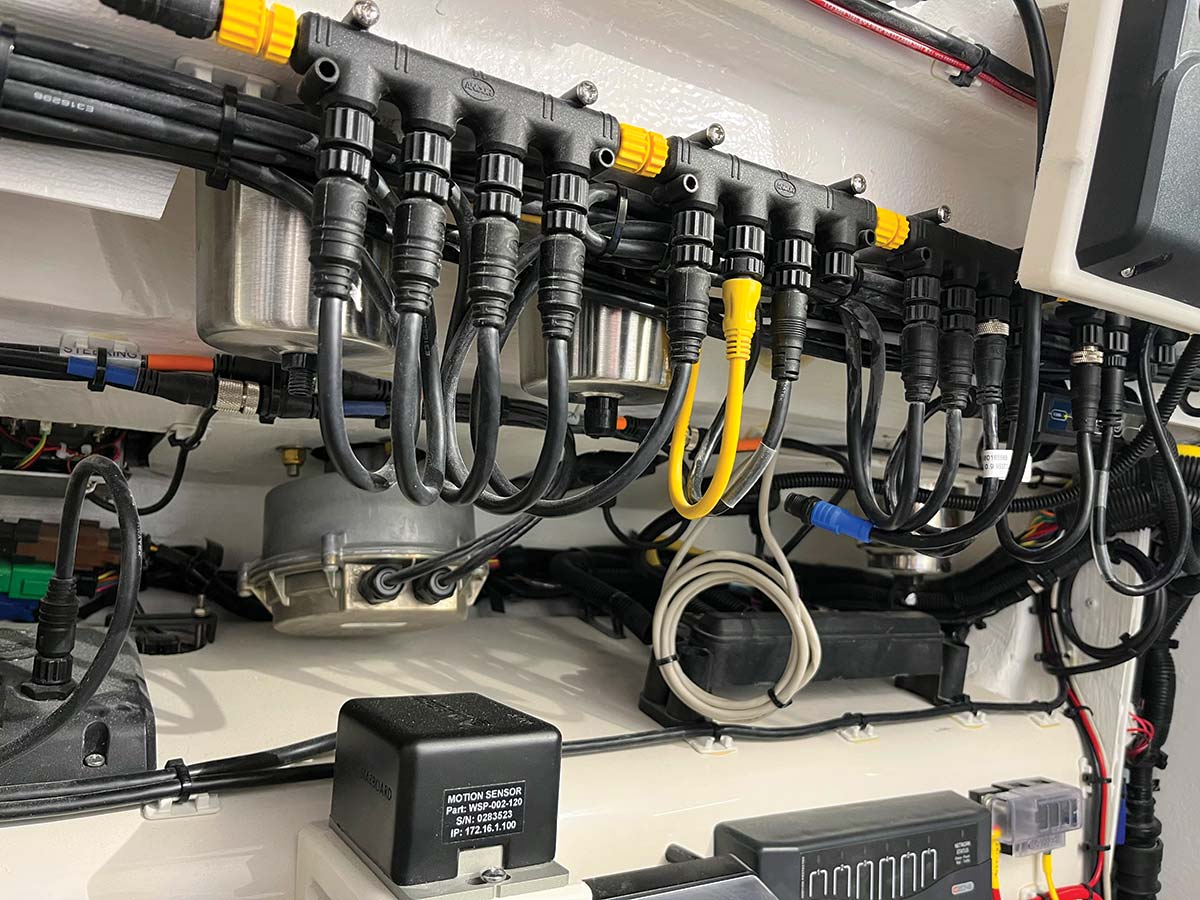
Different Strokes
To get a manufacturer’s viewpoint on why standalone marine electronics might still be relevant in 2023, I spoke with Furuno’s Jeff Kauzlaric to get some industry insights. “Most commercial fishermen that we speak with at the shows tend to gravitate towards standalone products depending on the size of the vessel,” Kauzlaric said, adding “Lately, we are seeing more hybrid-type systems, where they are using MFDs and also standalone products together. According to Kauzlaric, the larger the vessel usually means the larger the wheel house and the more room to put equipment and displays. “For instances where space is a concern they may opt for a MFD only solution,” said Kauzlaric, explaining “Although for the commercial fishing boats in general I think is still quite rare. If a commercial fishermen on a smaller boat needs to save space, they may opt for a MFD for charts, tracks and radar, but most will opt to have a standalone fishfinder.”
Generally speaking, Kauzlaric said the standalone fishfinder and radar is easier to use, although this is changing to some degree. “There are fewer menus for them to have to jump into to make a change for items that are changed most often, like gain, clutter, range,” Kauzlaric said, adding “Most commercial fishermen enjoy the ease of use with a standalone product over a MFD because many standalone units have a dedicated knob to make the adjustments.”
The need to maximize the use of limited dashboard space created the hybrid multi-function display, where boat owners now had the ability to combine many functions into one, which allowed the use of a larger single screen to do the job. The initial units allowed a chartplotting and echo sounding functionality, with a second monitor required for the radar. This was a significant improvement for helm ergonomics, shrinking three oversized CRT displays down to a pair of leaner LCD or LED screens. Gone were the days of bumping your head on a radar or fishfinder display that was mounted into the hardtop for expediency. Now everything was situated either in the angled vertical dash panel or on top of it, making for a neater and cleaner marine electronics installation.
As center consoles evolved in the 40- to 60-foot range over the past few seasons, so has the need for bigger and more sophisticated electronics. Nowadays, sophisticated NMEA 2000 networks rule the seas and they are getting more interconnected with every passing boat show. One good example of an integrated “one boat network” solution to marine electronics is manifested in Humminbird’s latest generation of big screen MFDs. This system integrates data via an internal network that allows the operator to control multiple functions, including, but not limited to fish finding, multiple transducer selection, shallow water anchor operation, chartplotting, navigation, electric trolling motor operation and more.
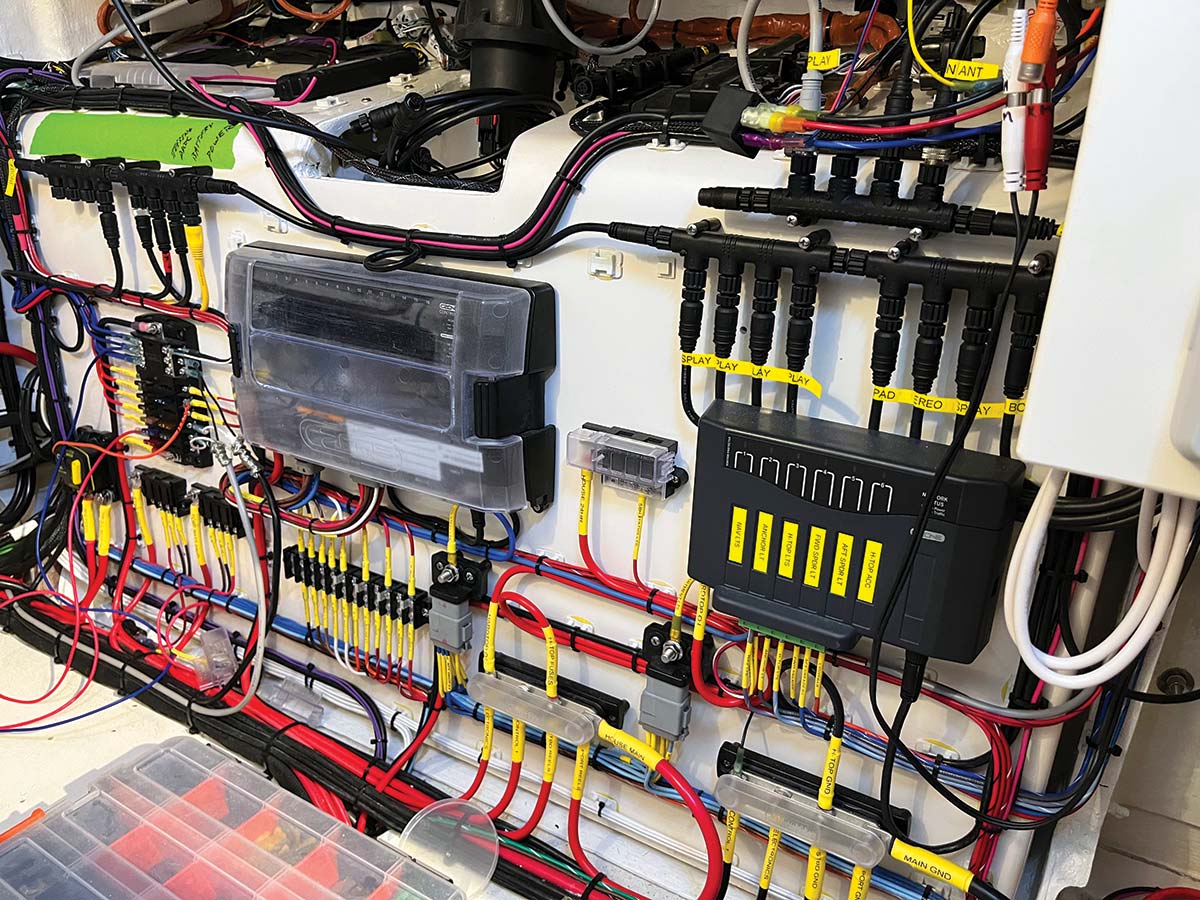
Power Up
Another consideration, when choosing multiple screen MFDs for your electronics array, is 12-volt battery power; you’re going to need plenty of it. When you start to get into the 30- to 40-something sized fishing machines, the days of having a cranking battery for each engine and a single house battery for the electronics are ancient history. Although simple flooded acid lead core, AGMs (absorbed glass mat) and Gel batteries are still viable in the marine marketplace, the new 800-pound gorilla in the room are the lithium ion power cells.
The electrical traits of the lead-acid trio described above are such that they start to lose voltage quickly as they discharge and have faster discharge rate and a shorter depth of discharge level that you can’t exceed before you start to compromise the battery’s ability to accept a recharge. In contrast, lithium ion batteries typically keep their voltage at peak levels for a longer duration and can be taken down to lower discharge levels more often without damage.
To sum it up, lead acid batteries will typically endure 200 to 400 partial or full discharge cycles before needing replacement, whereas lithium ion power cells can go 2,500 to 3,500 full discharge cycles during their lifetime. Sure, lithium ion batteries can cost three to four times more, compared to an equivalent lead acid battery, but can last 10 times as long. If you use your boat a lot or own a large electric trolling motor that gets a lot of use, lithium ion is definitely the wave of the future. Plus they are lighter and will not spill any liquid contents under your center console or in the bilge. I have seen the science and will upgrade my house battery to a lithium ion unit for the 2023 season and will report back on the results.
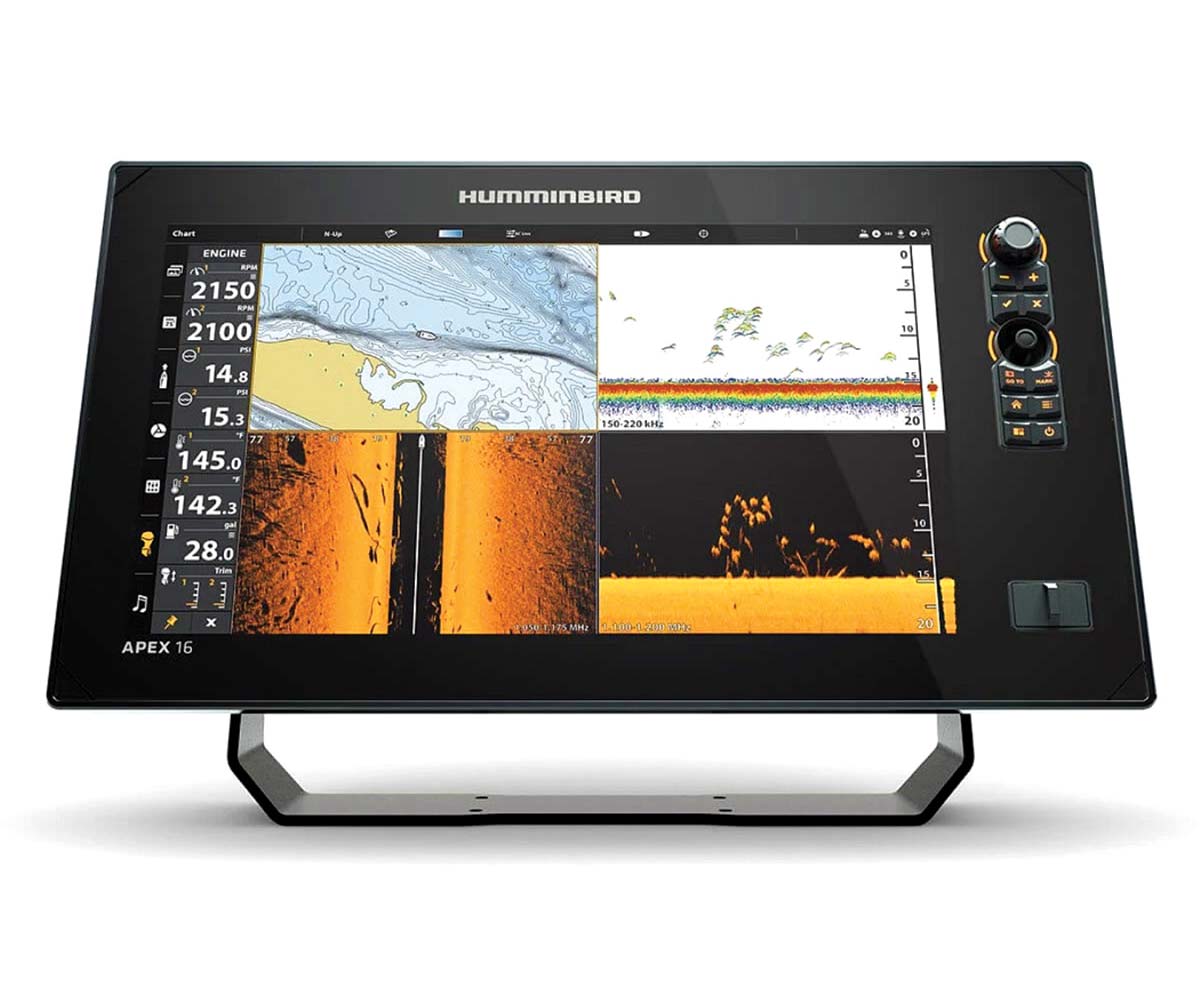
Personally, I have entertained two generational upgrades to my 2006 EdgeWater 228CC which I purchased back in the spring of 2015. This boat was never fished, so the original plain vanilla 5-inch Garmin combo chartplotter/sounder, transom transducer, marine stereo, VHF radio and hazy compass all had to go to suit my needs as a wreck fishing and near offshore angler. From the 2015 to the 2019 seasons, my marine electronics array included twin Furuno GP1870F combo chartplotter/echo sounder 7-inch display units, a Standard-Horizon VHF radio, two transducers (transom mount and in-hull), plus a dedicated Si-Tex surface sea temp gauge.
Even though each Furuno machine was capable of dual functionality, the clones were only tasked to perform a solo function, with one for dedicated chart plotting and the other strictly for echo sounding. This was a nod to my upbringing of employing standalone marine electronics, but with a twist. If one of my machines went down when I was many miles offshore, the other could multi-task in a pinch and give me a “hybrid” full capability for the ride home, albeit compressed onto a single 7-inch screen. It was a simple approach to my marine electronics needs that also afforded me some peace-of-mind with its intentional duplicity.
When I upgraded my original 2006 Yamaha F225 V6 to a Merc 250 V8 in the 2020 season, this afforded me the ability to go with a “big screen” MFD for my aging eyes. The electronics that gave me five seasons of stalwart use were morphed into a next-gen setup that included a Simrad GO-12 MFD, Mercury (Simrad/Navico) 5-inch engine display for my engine info, my trusty Standard-Horizon VHF and Si-Tex sea surface temp unit, a Furuno GP36 dedicated GPS navigator, plus a Si-Tex AIS (automatic identification system) that allows me to monitor commercial traffic in the shipping lanes and to find the draggers when it’s time to go tuna fishing.
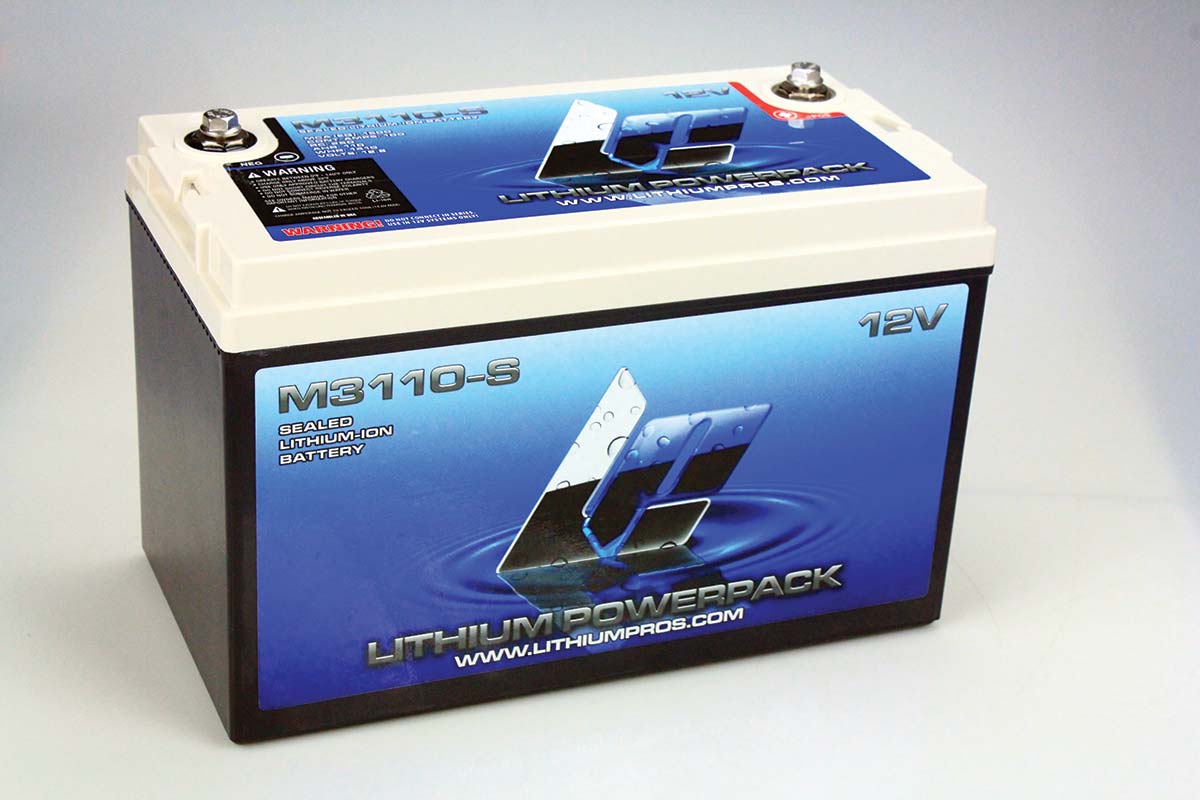
Most of this gear was now plugged into a basic NMEA 2000 network that shared information and offered some unique capabilities and big-screen overlays that I was not able to experience with the prior generational setup. This upgrade also included my Mercury 250 V8 that was drive-by-wire with electric controls. However, I decided to install the Furuno GP36 as a standalone unit to get me back home, just in case the entire network has a hiccup when I’m far from home port.
For this season, I am planning on mounting a Syonix night vision camera on the front part of my boat’s T-Top. This should be a relatively straightforward installation that will plug into my NMEA 200 network backbone via an additional T-connection and present its image on my GO-12 MFD. The addition of the Syonix N/V camera gives me an additional safety feature when I am getting home after sunset, or travelling to the faraway fishing grounds before the sun comes up to catch the early morning bite.
So what will work best for you and your boat? As I noted before, different strokes for different folks, it just depends on your budget, dashboard real estate and what you are trying to do.
Best of luck trying to solve your marine electronics puzzle.

